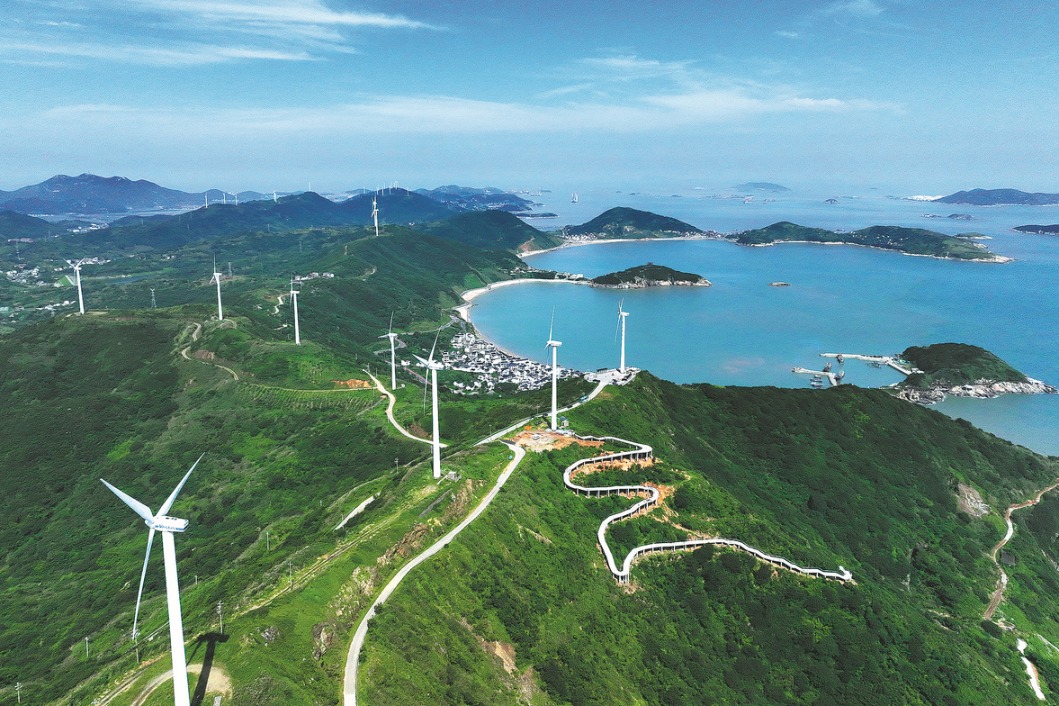China and Mongolia forming closer relations on trade and environment
By YUAN SHENGGAO | China Daily | Updated: 2023-10-18 09:33
Belt and Road cooperation and the development of the China-Russia-Mongolia Economic Corridor, alongside the biennial China-Mongolia Expo, will play a pivotal role in advancing economic and trade collaboration between China and Mongolia, said government officials.
The collaboration aims to deepen economic and trade partnerships, fostering stronger and amicable relations between the neighbors, they said.
At the first-of-its-kind trilateral meeting of senior Chinese, Russian and Mongolian representatives in Moscow, Russia in mid-September, consensus was reached in key areas including security affairs, upholding stability and prosperity in Northeast Asia, building on multilateralism and the synergy of development strategies.
"The three sides highly valued the results of their cooperation so far and agreed to further work closely together to jointly maintain regional security and stability," said a statement released by China's Ministry of Foreign Affairs.
At the meeting, the three countries said that closer trilateral business ties will help strengthen the synergy among the China-proposed Belt and Road Initiative, Russia's Eurasian Economic Union and Mongolia's Prairie Road vision.
Eager to enrich bilateral business ties, the fourth China-Mongolia Expo was held in Hohhot, Inner Mongolia autonomous region in early September. It has become an important platform for promoting economic and trade exchanges between the two countries and driving regional development.
Li Fei, China's vice-minister of commerce, said that the expo, with a focus on shoring up economic and trade cooperation, is oriented toward Northeast Asian countries and now has an extended outreach to countries and regions involved in the BRI.
The expo has been playing a key role in boosting the shared development of sectors such as infrastructure, food processing, advanced manufacturing, modern services, new energy, new materials and the digital economy in China and Mongolia, Li said.
Bilateral trade between the two countries grew 34 percent year-on-year to $12.2 billion in 2022, and sustained strong growth momentum in the first half of this year with a 62.6 percent year-on-year surge compared to the same period of 2022, data from the Ministry of Commerce showed.
China mainly imports mining products, wool, nuts, oilseed, beef, mutton, leather and dairy products from Mongolia. Meanwhile, its major exports to Mongolia are home appliances, clothing, machinery, refined oil, electronics, plastics and rubber products, computers, furniture, toys, trucks and freight trains.
China and Mongolia have common perspectives and shared interests in regional affairs and global governance. They can collaborate on relevant issues within multilateral forums, including the Shanghai Cooperation Organization, where Mongolia holds observer status, said Li Yongquan, head of the China Society for Russian, Eastern European and Central Asian Studies.
Founded in 2001 by China, Russia and four Central Asian countries — Kazakhstan, Kyrgyzstan, Tajikistan and Uzbekistan — the SCO now has eight official members, four observer states and 14 dialogue partners.
Apart from elevating their business connections to the next level, the China International Development Cooperation Agency and the National Forestry and Grassland Administration signed a framework agreement in early September with the Mongolian government on supporting the East Asian country's "Plant a Billion Trees" plan and conducting collaborative efforts in desertification control.
The China-Mongolia Desertification Prevention and Control Cooperation Center was also established at the same time and will serve as a vital platform for joint efforts in combating desertification, according to information released by the CIDCA.
The efforts involve China's support for Mongolia's ambitious "Plant a Billion Trees" plan and the construction of ecological protection and restoration demonstration areas. China will promote its afforestation, grass planting and sand-control techniques and models in Mongolia.
In addition, the collaboration includes the building of sand and dust monitoring stations in the Gobi Desert regions of China and Mongolia to conduct sandstorm monitoring and provide early warnings, said the CIDCA.
The two countries have committed to conducting joint research and capacity-building activities to mitigate the effect of sand and dust hazards in Northeast Asia.
























